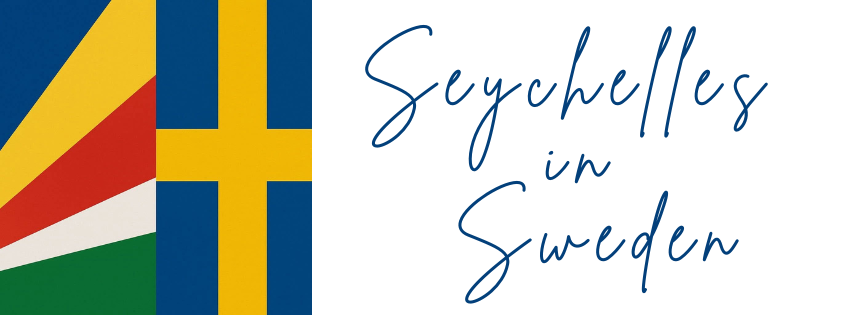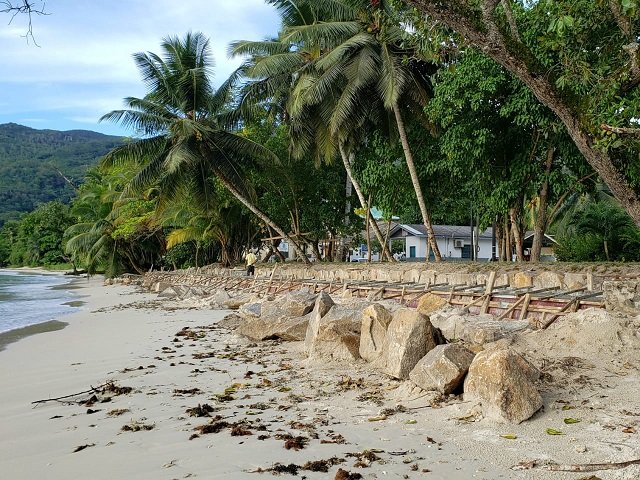How Sweden can unlock climate finance for Seychelles adaptation and loss prevention.
By Salim C. Mathieu
Small island states like Seychelles sit on the front line of climate impacts. Rising seas, stronger storms, coral bleaching and unpredictable rainfall threaten people, property and the tourism economy. The question is not whether adaptation and loss prevention are needed, but how to access the predictable, long term finance that makes action possible. Sweden has a track record of climate finance, innovative financing instruments and international leadership on loss and damage. By aligning Swedish instruments, multilateral funds and targeted national readiness, Seychelles can accelerate adaptation, protect assets and reduce future loss.
Why targeted climate finance matters for Seychelles
Seychelles faces a combination of high exposure and limited fiscal headroom. Investments are required across coastal protection, mangrove restoration, resilient water systems, climate smart ports and disaster preparedness. These projects are expensive up front but deliver major social and economic returns over time. The global architecture for climate finance includes the Green Climate Fund GCF and the Fund for Responding to Loss and Damage established under the Paris Agreement. For Seychelles, tapping these facilities while combining bilateral Swedish support can unlock finance at scale.
Sweden as a climate finance partner
Sweden has consistently increased its climate finance and pledged to scale up support for vulnerable countries. At COP29 Sweden announced a contribution to the new loss and damage fund, demonstrating political will to back the facility designed to help countries respond to irreversible harms from climate change. This type of commitment signals that Sweden is ready to translate diplomacy into finance.
Beyond direct contributions, Sweden uses several practical tools that are useful for Seychelles. Sida, the Swedish International Development Cooperation Agency, provides grants and technical assistance while Sweden’s guarantee instruments and development finance facilities help mobilize private capital. These guarantees reduce risk and attract commercial lenders to projects that otherwise look too small or risky. Sweden’s blended finance approach is therefore a model for packaging adaptation investments in Seychelles.
Four practical pathways Sweden can unlock finance for Seychelles
Provide targeted grant support to build readiness and project pipelines
Multilateral funds and private investors prefer projects that are well prepared. Sweden can fund feasibility studies, environmental and social safeguards, and project preparation facilities in Seychelles. These investments raise the bankability of projects before they seek large finance from GCF, the World Bank or private investors. The GCF in recent years has approved large adaptation programmes and early warning systems for vulnerable countries, showing the importance of robust project design.
Use guarantees and blended finance to mobilize private capital
Sweden’s guarantee instruments can underwrite part of the risk for renewable energy, resilient water infrastructure or coastal protection projects. Combining a Sida grant with a Swedish guarantee and concessional lending from multilateral development banks allows Seychelles to access lower cost capital while protecting sovereign balance sheets. This is especially relevant for medium scale infrastructure that private investors can operate but do not want to fund alone.
Channel funds into the loss and damage architecture while ensuring country access
Sweden’s early contribution to the loss and damage fund is welcome because it builds the institutional capacity needed to respond to irreversible impacts. For Seychelles, the priority is to ensure national procedures are aligned so that requests to the fund are rapid, evidence based and tied to community recovery. Sweden can support Seychelles to develop spend frameworks, rapid response protocols and monitoring systems that make access faster and more effective.
Support regional and programmatic approaches that lower transaction costs
Small island states benefit when projects are regional or programmatic. Sweden can support Seychelles to join regional programmes for meteorological services, climate resilient ports, and coastal zone management. Pooling requests or co-designing multi-island projects reduces the cost of preparing proposals and increases the scale that donors prefer. The GCF already supports regional resilience projects in the Indian Ocean, which Seychelles can plug into.
Laying the groundwork in Seychelles
To take full advantage of Swedish and multilateral finance, Seychelles needs to strengthen four domestic capacities:
• A national climate finance strategy that prioritizes investments and identifies co financing options.
• A project preparation facility inside government or a trusted agency to rapidly assemble bankable projects.
• Transparent procurement and safeguards systems that meet donor requirements.
• A monitoring and reporting framework that tracks both adaptation outcomes and financial flows.
These measures reduce friction and make Seychelles a more credible partner. Sweden is well placed to support each of these steps through technical assistance, grant funding and secondments from Swedish agencies.
Risks and how to manage them
There are real risks. Donor funding can be fragmented and short term. Guarantees and loans increase debt if not carefully structured. Loss and damage financing is still nascent and may take time to operationalize. The mitigation approach is clear. Blend grants and concessional finance to limit domestic fiscal exposure. Prioritize projects with measurable cost benefit and a clear revenue or social return. Use regional platforms where feasible to share risk and leverage scale.
Conclusion and call to action
Sweden offers more than money. It brings instruments, experience and a willingness to finance loss and damage responses. For Seychelles, the combination of Swedish grants, guarantees and multilateral facilities is a realistic route to scale adaptation, protect communities and prevent future loss. The immediate steps are simple and concrete. Create a priority project pipeline, seek Swedish support for readiness funding, and co design regional programmes that deliver impact at scale. If we act deliberately and with Swedish partnership, Seychelles can convert vulnerability into resilience and leadership.

